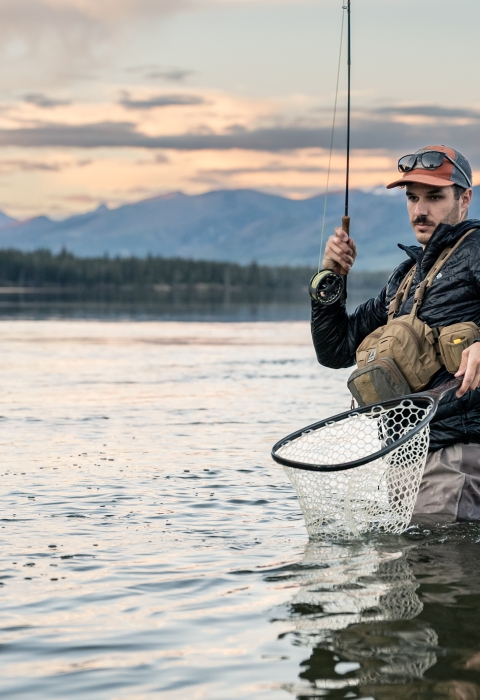This year, the Sport Fish Restoration Act turns 75. This milestone marks three-quarters of a century ensuring that sport fish populations and aquatic habitats are healthy, sustainable, and accessible for all. No other funding method has had the same longevity, consistency, and significance for fisheries management in the United States.
The Sport Fish Restoration Act, also known as the Dingell-Johnson Act, was signed into law at a time when the country was reshaping its identity after World War II. While industry reached new heights and suburbia sprawled, aquatic wild places—our rivers, lakes, and estuaries—were at risk of becoming afterthoughts. Fish stocks were in trouble, waterway access was an issue, and communities were losing their connection to nature. Representative John Dingell Sr. and Senator Edwin C. Johnson sought to change this and modeled new legislation after the successful Pittman-Robertson Act of 1937, which funded wildlife conservation through federal excise taxes on firearms and ammunition.
The congressmen applied the same principle to sportfishing, a federal excise tax paid by the manufacturers of most fishing equipment that would support state and territorial fish and wildlife agency fisheries management efforts, habitat restoration, angling opportunities, and waterway access.
A Watershed Investment
Sport Fish Restoration Act funding, administered by the U.S. Fish and Wildlife Service’s Office of Conservation Investment, provides Americans with the best sport fisheries in the world. Every state, territory, and commonwealth benefits, from Alaska, with its trout fishing in the Kenai River, to Florida, with its productive estuaries. The act supports the maintenance and operation of over 9,000 public boating and fishing access areas, provides aquatic education and an introduction to fishing to nearly 850,000 individuals annually, allows state biologist to manage and monitor over 200 species of sport fish, and funds the operations of more than 320 state fish hatcheries that stock more than 1 billion fish annually into American waterways.
All of this is accomplished through the act’s authorization of a 10% federal excise tax on fishing equipment, a 3% tax on electric boat motors and tackle and fly boxes, import duties on tackle, pleasure boats and yachts, and a portion of the federal gas tax that is attributable to motorboats and small engines. To date, eligible state, commonwealth and territory agencies have received more than $12 billion in federal funds, matched by billions of dollars in state license funds to foster fisheries conservation and connect people with the outdoors.
The state-industry-federal partnership created by the act has turned aging boat ramps into sturdy concrete launches and eroding banks into thriving angling streams. It has helped restore species like cutthroat trout, lake sturgeon, and striped bass. If you have ever watched a kid hook a bluegill in a suburban pond, been amazed by the gargantuan largemouth bass caught in a fishing tournament, or launched your boat from a public access point, chances are the Sport Fish Restoration Act had something to do with it.
More Than Just Fish and Outdoor Access
The Sport Fish Restoration Act isn’t just about sport fish and waterways, it’s about people. It’s about the grandparents teaching their grandchildren to tie a clinch knot, the family enjoying a day on the water, and the communities that share meals of freshly harvested fish. There is an intimate link between stewardship and the intrinsic, utilitarian, and cultural value of America’s fisheries. These fisheries and waterways connect us, to resources, to memories, to each other, and to something larger and longer lasting than ourselves.
Adapting for Tomorrow
As it celebrates its 75th anniversary, the Sport Fish Restoration Act faces a modern world that looks much different than the one Dingell and Johnson knew. But the framework they built on an industry-state-federal partnership remains remarkably resilient and ready to address challenges and opportunities for decades to come. As anglers make their way to their favorite fishing spots and bait hooks in this 75th year, most won’t think about the legislation behind the water they float or the fish they catch. The Sport Fish Restoration Act was never about credit, it is about conserving fisheries resources and continuing outdoor access.
Still, it’s worth pausing—maybe while tying on a new lure or rinsing off your boat —to remember that thriving fish stocks and clean accessible waterways didn’t happen by accident. It happened because Americans decided that sport fish and healthy waterways were worth investing in and that a shared partnership could lead to a collective legacy.









